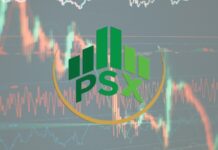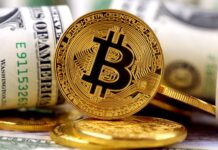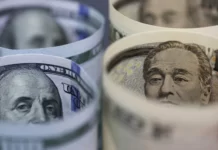U.S. producer prices increased by the most in three years in July amid a surge in the costs of goods and services, suggesting a broad pickup in inflation was imminent, posing a dilemma for the Federal Reserve.
The stronger-than-expected producer inflation report from the Labor Department on Thursday followed data this week showing consumers paid higher prices for services like dental care and airline fares last month. There were also no signs of further labor market deterioration in early August.
Economists had hoped that moderate services price gains would blunt the inflationary impact of higher goods prices from President Donald Trump’s sweeping import tariffs.
The U.S. central bank puts more emphasis on services inflation given the economy is services-driven. Though financial markets continued to anticipate the Fed would resume rate cuts in September, some economists urged caution.
“This is a kick in the teeth for anyone who thought that tariffs would not impact domestic prices in the United States economy,” said Carl Weinberg, chief economist at High Frequency Economics. “This report is a strong validation of the Fed’s wait-and-see stance on policy changes.”
The producer price index for final demand jumped 0.9% last month, the largest advance since June 2022, after being unchanged in June, the Labor Department’s Bureau of Labor Statistics said. Economists polled by Reuters had forecast the PPI rising 0.2%.
A 1.1% jump in the costs of services accounted for more than three quarters of the broad-based increase in the PPI.
The largest gain in service prices since March 2022 followed a 0.1% dip in June. More than half of the increase was driven by a 2.0% advance in trade margins, including for machinery and equipment wholesaling.
Portfolio management fees soared 5.8%, reflecting a stock market rally. Hotel and motel room prices rebounded 3.1%, while airline fares rose 1.0%. The cost of transporting freight by road increased 1.0%.
Goods prices vaulted 0.7% after climbing 0.3% in June. A 1.4% surge in food prices accounted for 40% of the broad increase in the cost of goods. Food prices were driven by a 38.9% acceleration in the cost of fresh and dry vegetables. Farmers have reported worker shortages as the Trump administration rounds up undocumented immigrants.
Wholesale beef prices jumped 4.6%, while those for eggs rebounded 7.3%. Coffee prices increased 1.1%.
Excluding food and energy, goods prices increased 0.4%, with strong rises in the costs of steel, aluminum and primary nonferrous metals. There were also sharp price increases for home electronic equipment, sporting and athletic goods.
In the 12 months through July, the PPI increased 3.3% after advancing 2.4% in June.
Economists said the data suggested businesses were not fully absorbing the higher costs from tariffs as some had argued in the wake of a mild increase in consumer prices in July.
“There continues to be clear evidence that prices of a number of durable goods are being passed through to consumers,” said Michael Hanson, an economist at J.P. Morgan.
“If these data survive subsequent revisions, then it might suggest that there are price increases taking place at the wholesale level that are likely to take longer to find their way into the prices facing consumers.”
Stocks on Wall Street were lower. The dollar advanced against a basket of currencies. U.S. Treasury yields rose.
Data collection issues
With the July report, the BLS ended the calculation and publication of approximately 350 indexes, including data from the PPI Final Demand-Intermediate Demand, special index, industry and commodity classifications.
The agency has suffered years of underfunding under both Republican and Democratic administrations, a situation worsened by an unprecedented campaign by President Donald Trump’s White House to remake the federal government through deep spending cuts and mass layoffs of public workers.
The resource constraints have impacted the closely watched employment report and also resulted in the suspension of data collection for portions of the CPI basket in some areas across the country. This has raised concerns about the quality of the government-produced economic data, long viewed as the gold standard.
The nomination of Heritage Foundation economist E.J. Antoni, a critic of the BLS, to head the statistics agency, is also adding another layer of worry over data quality. Economists across political ideologies have described Antoni as unqualified for the position.
With the PPI and CPI reports in hand, economists estimated the core Personal Consumption Expenditures (PCE) Price Index increased 0.3% in July after a similar gain in June.
That would raise the year-on-year increase in the so-called core PCE inflation to 2.9% from 2.8% in June. Core PCE inflation is one of the measures tracked by the Fed for its 2% target.
The Fed left its benchmark overnight interest rate in the 4.25%-4.50% range last month for the fifth straight time since December. Some economists said it should only consider cutting rates next month if July producer and consumer price data proved to be anomalies and nonfarm payroll gains remained below 75,000 jobs in August.
“If those three conditions are not met, it would be irresponsible from a central bank credibility perspective to cut rates,” said Brian Bethune, an economics professor at Boston College.
A separate report from the Labor Department showed initial claims for state unemployment benefits dropped 3,000 to a seasonally adjusted 224,000 for the week ended August 9.
The labor market has split into low firings and tepid hiring as businesses navigate trade policy. The number of people receiving benefits after an initial week of aid, a proxy for hiring, slipped 15,000 to a seasonally adjusted 1.953 million during the week ending August 2, the claims report showed.
“While the pace of hiring has slowed, firms are not resorting to widespread layoffs,” said Stephen Stanley, chief U.S. economist at Santander U.S. Capital Markets.
“This should be reassuring at a time when Fed officials look to be panicking over weak summer payroll readings for a second consecutive year.”























